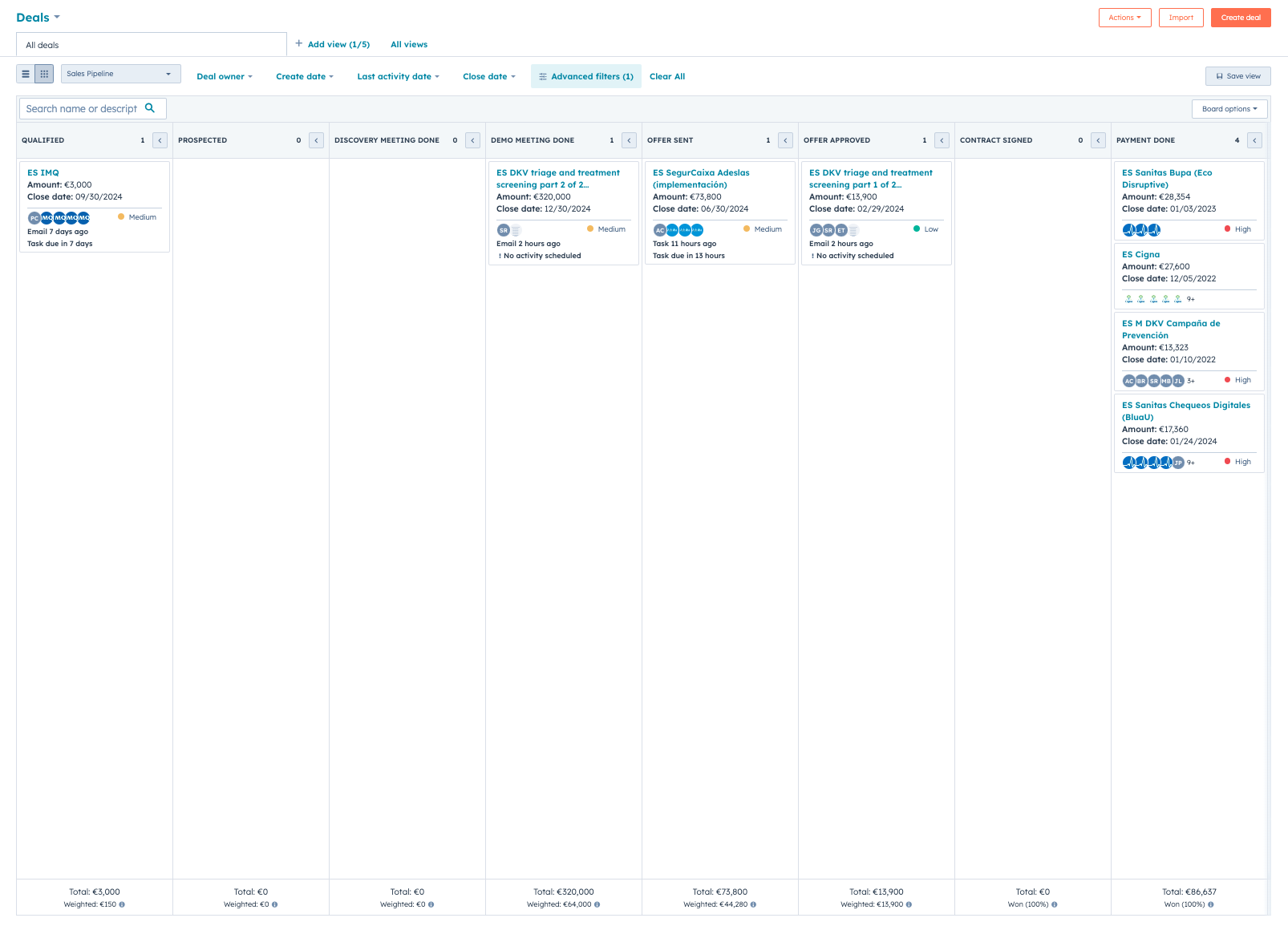🏢 Insurance Companies
In this section, you will find a list of our major customers in this segment.
- DKV
- Sanitas (BUPA)
- Cigna
Summary
Here's a screenshot of our sales pipeline for this segment.

Insurance companies pain
Insurance companies face 3 pains:
- Difficulty to differentiate from competition and attract new customers, especially young and healthy ones.
- High operating costs.
- Difficulty providing healthcare services to their customers (only applicable when they also operate as care providers). Plus, the scarce amount of specialists
aggravates those pais and make it difficult for insurance companies to reduce their costs and provide quick and effective care to their customers patients. Furthermore, the insurance sector is very mature and the competition is fierce. That is why insurance companies pursue differentiation and care about the customer experience. They specially target young adults, who are the most profitable segment. However, these young adults are difficult to attract. This is why some insurance companies also act as care providers. But again: the lack of dermatologists makes it difficult to scale their value proposition.
How Legit.Health is helping
Insurance companies will be able to:
- Immediately provide a first level of assistance. This way, they can compete against care providers who are making patients wait up to 12 months.
- The Automatic Severity Assessment feature and the Diagnosis Support feature empower non-medical employees to perform clinical tasks, without having to wait
for specialists (who are scarce and expensive). - Also, it allows insurers to detect diseases quicker and prevent expensive interventions. Prevention is a known practice to reduce claim-associated costs, especially around skin cancer. According to our pilot results with the insurance company DKV during 6 months with more than 2000 users, our solution enabled them to provide immediate and ubiquitous medical care. It improves the customer experience in relation to digital care. Also saves up to 40% of the specialist-related costs, unnecessary referrals, and potentially reduces interventions thanks to prevention.